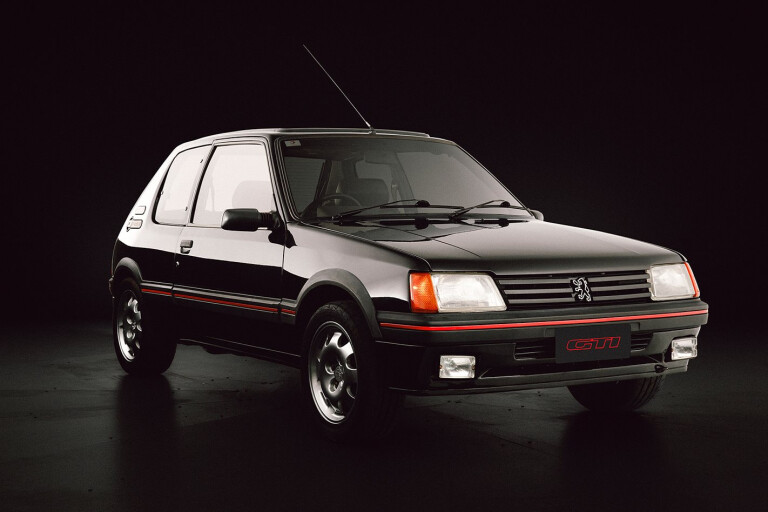
Out of the corner of his eye he caught a glimpse of the power poles going off to the left and away from the road. It would have been warning enough but the little car was totally committed to the corner now, so the knowledge that the corner followed a decreasing radius counted hardly at all. If the car was good enough, they were safe.
Until now the blacktop had been predictable, a fast, open ribbon of road. The tiny green hatchback had been perfection, its engine hard, responding instantly to the driver’s commands, and with its superb close-ratio gearbox, never dropping below 5000rpm. How smooth it felt, how sweet. The steering had responded in kind. There was no slack, no sponge, just a direct connection between the tiny soft-rimmed wheel and the squat Michelins. Every tiny input was passed through to the road, every apex judged down to the finest degree, such was the accuracy and precision. Was it not inspiring, did it not build confidence? To be sure, and that was the danger, that was the reason this recommended 65km/h corner had been entered at over twice this speed.
The car turned in beautifully, as always, but that was before the driver realised this corner was different. Now it was off the throttle quickly and sharply; the tail flicked out ever so slightly, yet no more than to require a roll of the wrists in reply, then down to third and flat again, the tyres scrambling for traction, clawing at the coarse surface, the driver aware through the steering wheel that he had used up all that reserve of tenacious grip. Then it was through and gone, the poise and balance had won, and he knew this was no Japanese pretender.
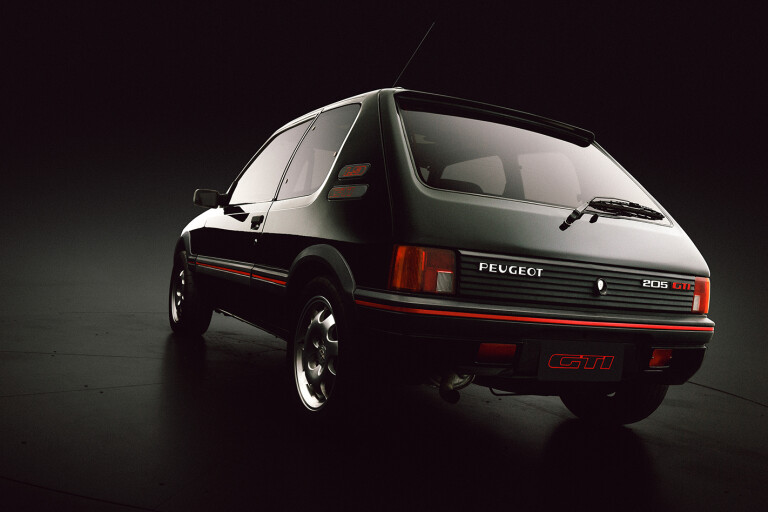
Peter Robinson, Wheels, December 1985
Has any passage of prose better summed up the appeal of the Peugeot 205 GTi than Robinson’s road test for this publication back in 1985? This 205 GTi was always a car best enjoyed at ten-tenths, teasing at that part of the dynamic envelope beyond the ken of its peers. Yet even for those who never possessed anything like Robinson’s skill behind the wheel, the 205 GTi’s reputation alone endowed it with an irresistible X-factor, usurping the Golf to become the most revered hot hatch of the 1980s. In truth, the ethos of the 205 GTi was actually closer to featherweights like the Fiat Uno Turbo and Renault 5 GT Turbo, and latterly the Clio Williams, than the doughty Golf GTI MkII, but such was the shadow cast by the VW that it became the inevitable yardstick.
Designer Gérard Welter’s production car palmarès also includes the 304 and 305, the 405 and 406, the 604 and the RCZ. His competition-car resume was possibly even more spectacular, and included the WM-Peugeot 88 sports racing cars which set a speed record at Le Mans of 407km/h that stands to this day, as well as the most successful rally car of the Group B era, the Peugeot 205 T16. Add to that the Paris-Dakar-winning 205 and 405 Coupes and the Pikes Peak 405 Coupe made famous at the hands of Ari Vatanen in the 1988 film Climb Dance. Welter passed away last year, having served 47 years with Peugeot. He was undoubtedly one of the great styling domestiques.
The interior of the 205 was styled by a far more illustrious name. Paul Bracq, a Frenchman who penned classics like the Mercedes-Benz SL ’Pagoda’, and the entire BMW road car range (3, 5, 6 and 7 Series) of the 1970s, not to mention the high-speed TGV train. His interior treatment for the 205 featured a modular arrangement, allowing for the fitment of different binnacles for the various 205 models. He himself would own a 205 GTi as a daily driver for better than two decades.
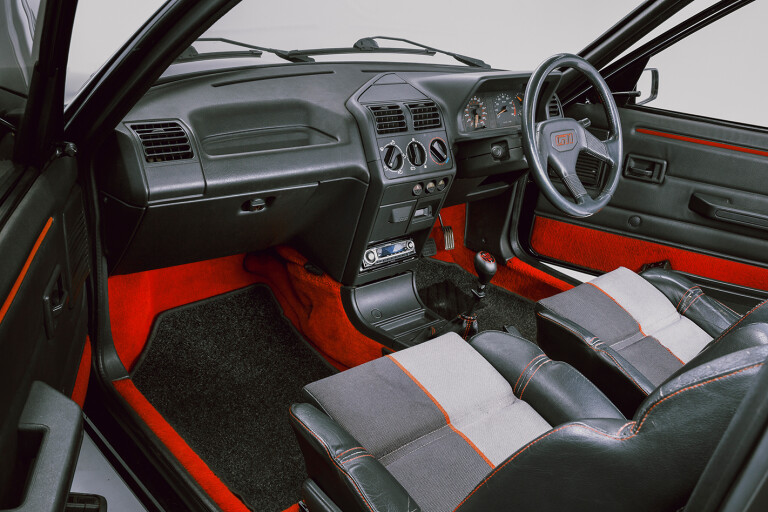
‘Projet M24’, the 205 development cycle, commenced in 1977 with two competing designs. Welter’s proposal advocated a softer, more rounded aesthetic but he was up against the power of Pininfarina, who envisaged a sharper-edged hatch, extending the aesthetic of the earlier 104. The Torinese design house felt the run-off to be a no-contest and was astonished when its proposal was rejected for being too conservative. In January 1980, Welter’s final design was signed off.
Its importance for PSA couldn’t be overestimated. Peugeot’s design language was aged and investments in Citroen and Chrysler/Simca weren’t returning meaningful dividends. The company had bet the house on the 205. The design criteria called for a modern hatch with a kerb weight of 735kg for entry-level cars, fuel economy around 15 percent better than the 104, overall length set at 3680mm and width restricted to 1550mm.
After the Sochaux team’s design was selected, events moved quickly. They had to. At the beginning of 1981, the first rolling prototype was built at Garenne-Colombes, and by summer 1982, some 360 pre-production cars were produced at the Mulhouse Production Centre. Production cars were built in November, and on January 20, 1983, Peugeot dealers were invited to the Loews Hotel in Monaco for the preview of the new 205 ahead of its official unveiling in February of that year.
The 77kW 205 GTi 1.6 would have to wait until June ’83 for its debut ahead of a 1984 on-sale date. Springs, dampers and rear anti-roll bar were all hugely beefed up, while the front anti-roll bar was softened. No wonder the car earned a reputation for off-throttle adjustability, for better or for worse. The 1.9-litre GTi with 96kW XU9JA engine appeared in 1986, and the following year, the 1.6-litre GTi’s XU5J engine got the same big-valve cylinder head as its more powerful sibling, but the 85kW 1.6-litre XU5JA unit never officially came to these shores. We got the 1.9-litre car, which arrived in October 1987 wearing a $29,500 price tag. Sounds a lot, but remember that back in ’88, a Citroen XM would set you back $84,950. That one didn’t so much as fall out of bed pricewise, it crashed through the floorboards and disappeared down an abandoned mineshaft.
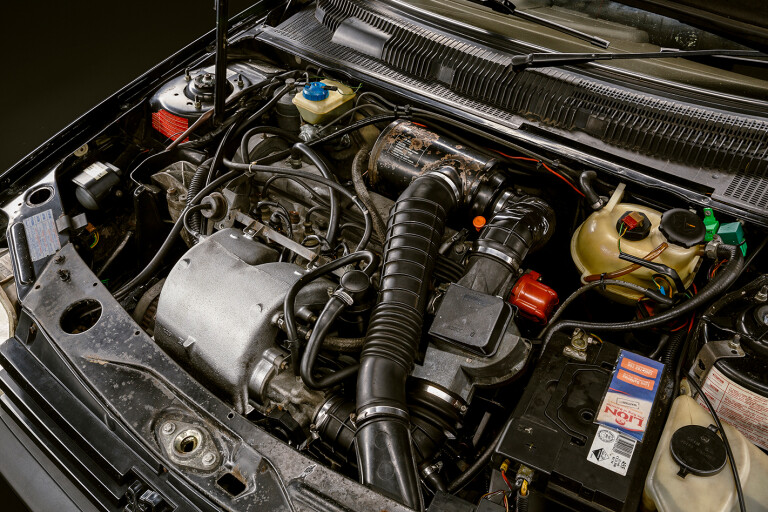
Buyers had the choice of air-conditioning or power steering but not both, as these competed for right-hook under-bonnet real estate. Power was initially a feeble 75kW and torque rated at 142Nm, courtesy of Australian emissions laws that arrived with unleaded petrol in 1986, resulting in a lacklustre 0-100km/h time of 8.9 seconds. One solitary 1.6-litre GTi was brought into Australia by Peugeot for evaluation and is still around today. Facelift cars arrived in 1991 with a still-catalysed but notably heartier 90kW lump, the other benefit being that the revision finally overcame the air-con/power steering conundrum. When finally withdrawn from sale in 1994, the 205 GTi 1.9 was priced at $33,730, and it’s these ‘91-’94 cars that are most sought after by Aussie collectors.
Although most would posit the 205 GTi is made of metal so insubstantial that you could wrap a baked potato with it, they are extensively galvanised. Nevertheless they can and do rust, being particularly susceptible to water ingress in the quarter-panel ahead of the rear wheel arch. The reason? There’s usually a hole where the rear suspension bump stops fall out. Be especially diligent checking UK imports. Just behind the front wheelarch is what looks like a jacking point but isn’t. If it’s been jacked it can chip and cause rust. The floorpan ahead of the fuel tank where the brake pipes run and the rear bumper mounts are also rust-prone.
Rear radius arm bearings are a weak point, as are front suspension bushes. Worn drop links are another contributor to chattering and clunky suspension. The alloy 1.9-litre engine isn’t particularly tolerant of abuse. Valve guides wear and head gaskets can fail due to corrosion through a lack of anti-freeze. Oil can leak into the distributor via failed O-rings but the big issue with oil is a failed rear main seal behind the transmission which will necessitate a gearbox-out fix. The multipoint injection system can easily fall out of tune. Lumpy idling and rough running will need somebody who knows what a wideband lambda sensor is, but first check for blocked and leaking breather hoses. One tip for owners? Disconnect the central locking. It is always more trouble than it’s worth.
Peter Robinson’s original review of the GTi ended with a word of warning. “This is a car for driving, after all,” he noted. “And as such it is exciting, thoroughly satisfying and yet practical and economical. If only it were affordable.” More than three decades on, the 205 GTi remains charming and fun, and yes, keeping one in top fettle could still render you penniless. Speak to owners and they’ll put you straight in no uncertain terms. The ends more than justify the means.
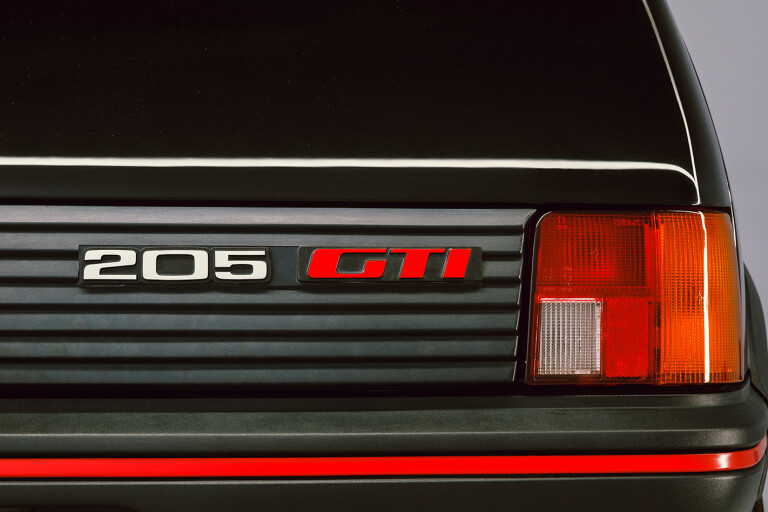
Do you own a cool Modern Classic? We want to know about it
Fast Facts
Surprisingly, the Peugeot 205 never won European Car of the Year, being pipped to the crown in 1984 by the Fiat Uno, a car that easily outsold the 205 range 8.8 versus 5.3 million. The 205 also sold only half the total of its successor, the 206, a model that many identify as the car that deterred millions from ever buying a Peugeot again.
What’s it like to own?
“I was curious as to how good the 205 GTi really was ever since I first learnt about it. Being a UK import, it’s slightly quicker than locally delivered versions, but there was some rust in the rear arches that wasn’t disclosed upon purchase. There was some choice restorative mechanical work carried out at the front end, so it drives quite well, and modern tyres help quell the lift-off oversteer. The rust is now sorted and the plan is to just drive it and enjoy it, with the value being in how original it is. It’s still such a rewarding drive.”
Alastair Brook – St Kilda East, Vic
Specs
Model: Peugeot 205 GTi
Engine: 1905cc 4cyl, dohc, 16v
Max power: 90kW @ 6050rpm
Max torque: 152Nm @ 4750rpm
Transmission: 5-speed manual
Weight: 880kg
0-100km/h: 8.2sec
Fuel economy: 9.1L/100km
Price: $20,000 (good condition today)



COMMENTS